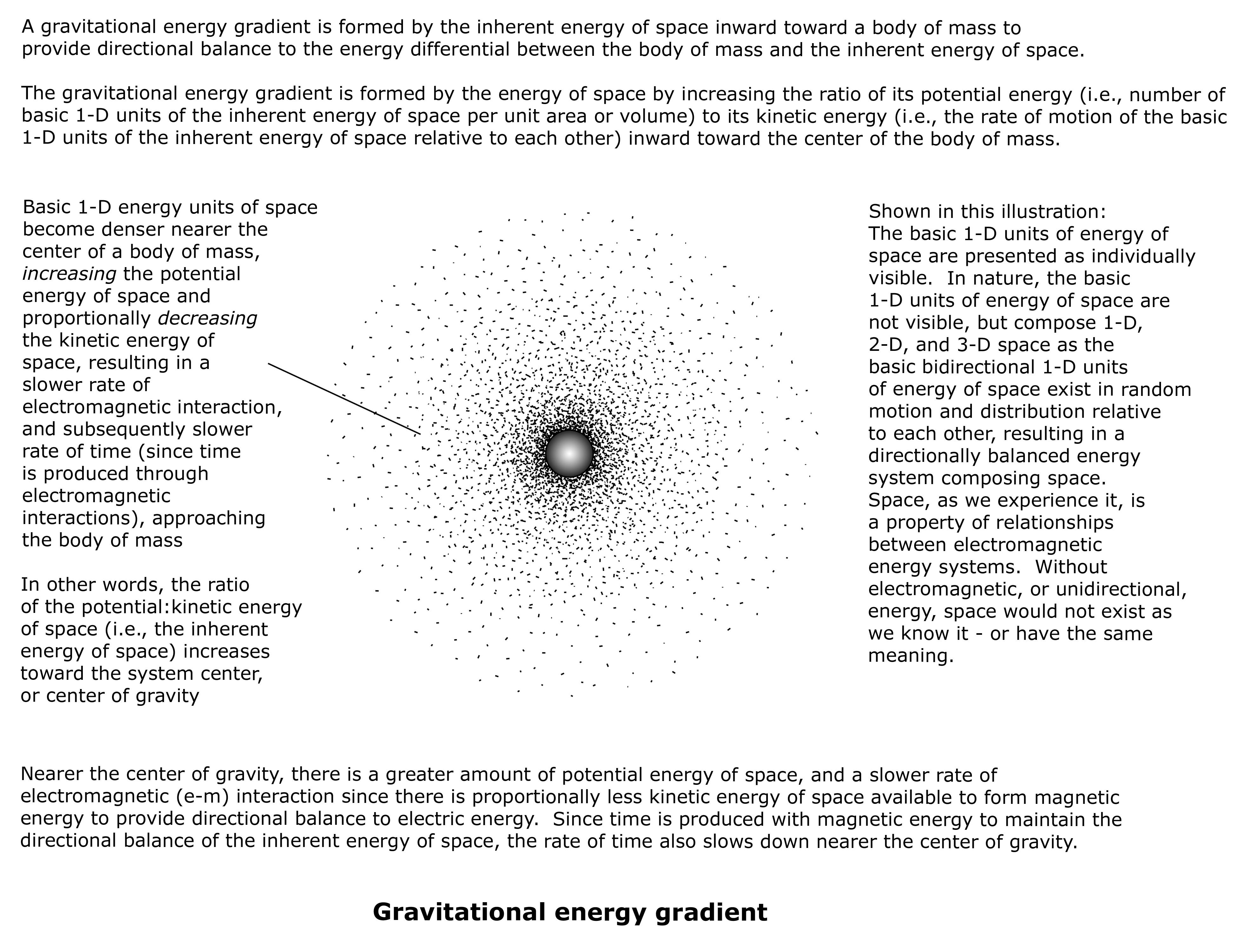 The inherent energy of space consists of basic 1-D units of energy in constant random motion and distribution relative to each other.
The inherent energy of space consists of basic 1-D units of energy in constant random motion and distribution relative to each other.
The total energy of each basic 1-D unit of space consists of potential and kinetic energy, and is constant. The potential energy of space is composed of the energy contained within each basic 1-D unit of energy, and the number of basic 1-D units of energy per unit area or unit volume. The kinetic energy of space consists of the rate of motion of basic 1-D units of energy relative to each other (and possibly the degree of their randomness and distribution – or degree of directional balance).
The inherent energy of space responds to the energy differential between a body of mass (2-D or 3-D e-m energy system*) and the energy of adjacent space by forming a directionally opposing gravitational energy gradient by:
1) increasing the proportion of its potential energy toward the body of mass, and
2) proportionally decreasing the amount of its kinetic energy toward the body of mass (i.e., through an increasing ratio of potential:kinetic energy of space toward center of gravity).
The inherent basic 1-D units of energy compose the fabric of space. Near a body of mass, where there is a large proportion of potential energy of space, the fabric of space is ‘thick’ and lethargic. The gravitational energy gradient results in slower rates of electromagnetic interaction, or slower rates of time, nearer and nearer to the body of mass*. The inherent energy magnitude and directional balance of space is maintained in the process.
* Any 2-D or 3-D energy system consists of mass since it possesses a gravitational energy gradient (formed by the energy of surrounding space). 1-D electromagnetic energy systems cannot possess “mass” because the basic 1-D units of space form a gravitational energy gradient in 2-D or 3-D space. It is not possible to form such a gradient in 1-D space.
